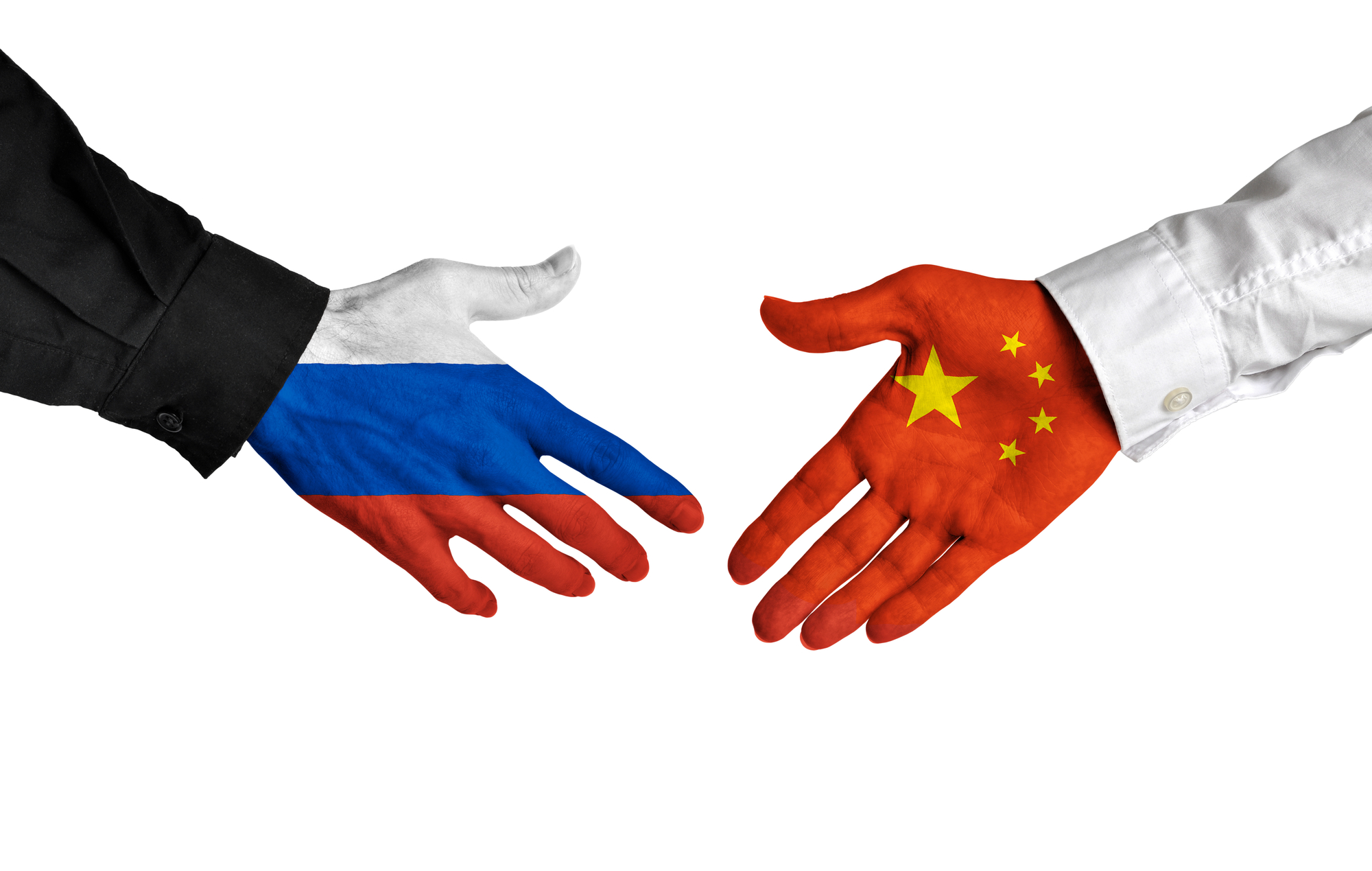
Deniz ÜNVER
Independent Researcher
Just as in the Cold War era, the world is again witnessing a power rivalry between the great powers, and this rivalry has made itself visible in every possible field. In particular, it can be seen in the transportation projects, which are a tool for great powers to build and expand influence. China’s Belt and Road Initiative (BRI) can be seen as the greatest example to this transportation projects. While China’s BRI has been under the spotlight for a while, the Three Sea Initiative (3SI) is another striking project that is sure to be mentioned more in the future.
Today, 3SI members consist of twelve countries: Estonia, Latvia, Lithuania, Poland, Czechia, Slovakia, Austria, Hungary Slovenia, Croatia, Bulgaria, and Romania[1]. Introduced in 2015 by Poland and Croatia, 3SI has the aim of developing the economy and infrastructure of the twelve countries which are located in the Baltic, Black, and Adriatic Seas[2]. There are several prospects for the establishment of 3SI. First, it was established to fill in the gaps in regions’ transport, energy, and digital infrastructure sectors[3]. In particular, a “List of 48 Priority Projects” was published in the 2018’s 3SI summit which took place in Bucharest, and energy, transportation and digital fields were called the main pillars of 3SI[4]. Furthermore, it can be suggested that one of the aims of 3SI is to foster dialogue while improving the relatively weak infrastructure of the region[5].
So far, four presidential level summits were held for the Initiative and the fifth summit is planned to be held in Latvia in 2022[6]. In the previous summits, the economic projects of 3SI were considered and those projects were brought to the attention of the international community[7].
The crucial thing about 3SI is the fact that its member countries constitute one-third of the European Union and their total population consists of 111 million people, with a per capita GDP of approximately 80 per cent of the EU average[8]. In addition to those, member countries reportedly have the fastest growing economies in the EU[9].
3SI is accepted as a geopolitical alliance of NATO/ EU member states which will connect the Baltic and Adriatic Seas[10]. This can be understood from the fact that the member states of the Initiative, except for Austria, have some commonalities such as NATO/ EU membership and a communist past[11].
For this reason, it was enthusiastically supported by the United States when the project was established[12]. It is known that that Donald Trump, then the US President, gave his backing to the project[13] and Mike Pompeo, the then US Secretary of State, declared during the 2020 Munich Security Conference that the US would give 1 billion dollars to the Initiative[14]. The current US Joe Biden administration has also continued to give support to 3SI while considering that Germany should have a greater role in the Initiative[15]. Furthermore, the US House of Representatives passed a resolution which gave support to the 3SI last year[16].
This can be explained by the fact that 3SI is seen as a project to limit the Chinese and Russian influence in the region by the US[17]. The significant point is that 3SI is accepted as an alternative project to prevent the realization of the China’s BRI by the US[18]. This was also suggested by Michael Carpenter, the foreign policy advisor of the US President Biden; “Good to see bipartisan support in the [US House of Representatives] for the 3 Seas Initiative, which could become a private sector led alternative to China’s BRI”[19]. It is seen as an alternative to BRI because it has the aim of altering the revenues of the Chinese state led infrastructure firms in Europe[20].
In addition to this, another possible advantage of 3SI is to hinder the Russian political and economic interests in the region. 3SI has a potential to break the dominance of Russian energy supplies and that is stated as one of the reasons for the US to support 3SI[21]. By doing so, the Initiative can push the influence of EU and increase the gas sales of the US, which is said to be another benefit of 3SI to the US[22].
For those reasons, the US is aware of the Initiative’s economic potential and estimated political impact[23]. To the US, 3SI offers a way to boost NATO’s military capability and the operational planning of the US[24]. It can be said that since the end of the Cold War, NATO has considerably developed and advanced the alliance’s frontier in the east[25]. As a matter of fact, the construction of roads and bridges continue in the intermarium corridor, in particular, between Warsaw, Tallinn, and Helsinki[26]. There is also Carpathia, where the biggest military mobilization of NATO’s eastern side is taking place[27].
However, there are challenges for 3SI to be established and become effective. One of the challenges is the opposing and controversial views of the member states. For instance, in contrast to the enthusiasm of Polish authorities for the establishment of the project, Czech authorities carry some suspicion towards 3SI[28]. According to the Czech view, 3SI can increase Polish power in the region, as well as cause an East-West split within the EU[29] Moreover, just like Poland, the Baltic countries also consider 3SI with geopolitical and historical views and according to them, 3SI can undermine Russian influence as well as that of the Chinese[30]. On the other hand, member countries such as Hungary and Austria have a more pragmatic stance,[31] since they have been following a balanced policy between the East and the West.
In general, 3SI is considered as a hope for the Western world. With a promising agenda and prospects, it aims to increase the connectivity of the region with improvements in digitalization, infrastructure, and energy fields. The project itself is expected to limit Russian and Chinese interests in the region. If 3SI is successfully realized, then it would also mean that the NATO enlargement would take roots in eastern Europe.
There is also a sinister aspect to the Initiative. Originally, it envisaged also including Belarus and Ukraine in the project so as to avail a direct waterway connection from the Baltics to the Black Sea through canals and rivers. This is apt to be construed by a number of others, including Turkey, to be an effort to bypass the limitations posed by the Montreux Convention for access to the Black Sea. From a Turkish point of view, it is also apt to be interpreted as further consolidating the Eastern flank of NATO in eastern Europe, in parallel with what the EU has been doing; drawing the eastern borders, dividing the Balkans, and leaving Turkey outside.
*Photograph: http://three-seas.eu/about/
[1] Andrew A. Michta, “The Three Seas Initiative will reorder NATO’’s eastern flank”, 1945, November 1, 2021,https://www.19fortyfive.com/2021/11/the-three-seas-initiative-will-reorder-natos-eastern-flank/
[2] Ibid.
[3] Tim Gosling, “Navigating the Three Seas Initiative”, Balkan Insight, December 30, 2020,https://balkaninsight.com/2020/12/30/navigating-the-three-seas-initiative/
[4] David Morris, “The Three Seas Initiative: A European Answer to China’s Belt and Road”, The Interpreter, October 26, 2020,https://www.lowyinstitute.org/the-interpreter/three-seas-initiative-european-answer-china-s-belt-and-road
[5] Monika Sieradzka, “Europe's 'Three Seas Initiative' aims to curb Chinese influence”, DW, October 18, 2020, https://www.dw.com/en/europes-three-seas-initiative-aims-to-curb-chinese-influence/a-55314607
[6] Michta, “The Three Seas Initiative will reorder NATO’’s eastern flank”.
[7] Ibid.
[8] Ibid.
[9] Ibid.
[10] Petar Kurecic, “The Three Seas Initiative: geographical determinants, geopolitical foundations, and prospective challenges”, Hrvatski Geografski Glasnik, January 1, 2018, https://www.researchgate.net/publication/326073180_The_Three_Seas_Initiative_geographical_determinants_geopolitical_foundations_and_prospective_challenges
[11] Ibid.
[12] Morris, “The Three Seas Initiative: A European Answer to China’s Belt and Road”.
[13] Gosling, “Navigating the Three Seas Initiative”.
[14] Michta, “The Three Seas Initiative will reorder NATO’’s eastern flank”.
[15] Ibid.
[16] Gosling, “Navigating the Three Seas Initiative”.
[17] Ibid.
[18] Morris, “The Three Seas Initiative: A European Answer to China’s Belt and Road”.
[19] Gosling, “Navigating the Three Seas Initiative”.
[20] Morris, “The Three Seas Initiative: A European Answer to China’s Belt and Road”.
[21] Gosling, “Navigating the Three Seas Initiative”.
[22] Ibid.
[23] Michta, “The Three Seas Initiative will reorder NATO’’s eastern flank”.
[24] Ibid.
[25] Ibid.
[26] Ibid.
[27] Ibid.
[28] Gosling, “Navigating the Three Seas Initiative”.
[29] Ibid.
[30] Morris, “The Three Seas Initiative: A European Answer to China’s Belt and Road”.
[31] Ibid.
© 2009-2025 Avrasya İncelemeleri Merkezi (AVİM) Tüm Hakları Saklıdır
Henüz Yorum Yapılmamış.
-
 ÜÇ DENİZ GİRİŞİMİ (ÜDG): BATI'NIN BÜYÜK GÜÇ REKABETİ HAMLESİ-06.03.2023
ÜÇ DENİZ GİRİŞİMİ (ÜDG): BATI'NIN BÜYÜK GÜÇ REKABETİ HAMLESİ-06.03.2023
Deniz ÜNVER 06.03.2023 -
 ÜÇ DENİZ GİRİŞİMİ VE NATO GENİŞLEMESİ - 17.12.2021
ÜÇ DENİZ GİRİŞİMİ VE NATO GENİŞLEMESİ - 17.12.2021
Deniz ÜNVER 14.01.2022 -
 AVRUPA’NIN ENERJİ KRİZİ VE TÜRKMEN GAZI - 17.03.2023
AVRUPA’NIN ENERJİ KRİZİ VE TÜRKMEN GAZI - 17.03.2023
Deniz ÜNVER 17.03.2023 -
 ÇİN VE RUSYA ARASINDAKİ EKONOMİK ORTAKLIK - 13.04.2023
ÇİN VE RUSYA ARASINDAKİ EKONOMİK ORTAKLIK - 13.04.2023
Deniz ÜNVER 13.04.2023 -
 DOLARSIZLAŞTIRMA GİRİŞİMLERİ - 13.02.2023
DOLARSIZLAŞTIRMA GİRİŞİMLERİ - 13.02.2023
Deniz ÜNVER 13.02.2023
-
 LOZAN DENGESİ
LOZAN DENGESİ
Tugay ULUÇEVİK 05.09.2017 -
 KANTOR CENTER ANNUAL REPORT ON ANTISEMITISM WORLDWIDE 2017: THE YEAR THE MASK CAME OFF - EUROPEAN JEWISH CONGRESS - 11.04.2018
KANTOR CENTER ANNUAL REPORT ON ANTISEMITISM WORLDWIDE 2017: THE YEAR THE MASK CAME OFF - EUROPEAN JEWISH CONGRESS - 11.04.2018
European Jewish Congress 17.04.2018 -
GKRY’NİN YENİ LİDERİ NİKOS ANASTASİADİS VE KIBRIS SORUNU
Tugay ULUÇEVİK 10.03.2013 -
 ARMENIAN EXTREMISTS ARE BLOCKING PEACE IN NAGORNO-KARABAKH - THE NATIONAL INTEREST - 22.10.2022
ARMENIAN EXTREMISTS ARE BLOCKING PEACE IN NAGORNO-KARABAKH - THE NATIONAL INTEREST - 22.10.2022
Maxime GAUIN 24.10.2022 -
ROMANYA EKONOMİSİNDE KEMER SIKMA POLİTİKALARINA DEVAM Dr. Erhan TÜRBEDAR
- 06.12.2011


